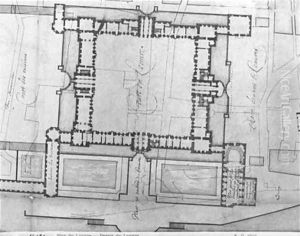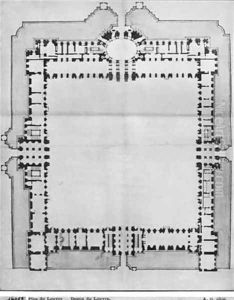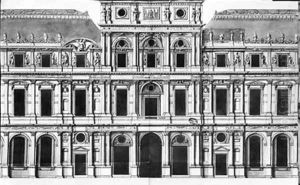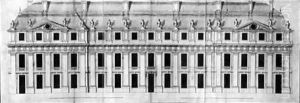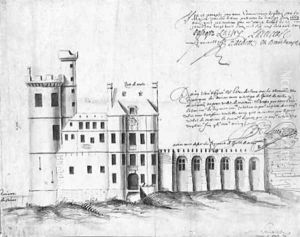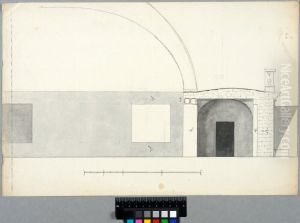Louis Le Vau Paintings
Louis Le Vau was a preeminent French architect who played a pivotal role in the development of the French Classical style during the 17th century. Born in 1612 in Paris, France, to a family of minor nobility, Le Vau was immersed in the world of architecture from an early age. His father was a stone mason, which allowed Le Vau to gain practical experience and an appreciation for the craft of building. He quickly rose through the ranks, becoming known for his skill and creativity.
Le Vau's career took a significant turn when he was appointed as one of the first architects to the king under Louis XIV. This position enabled him to work on some of the most prestigious projects of his time. Among his most famous works is the expansion of the Château de Vaux-le-Vicomte, a masterpiece of French Baroque architecture, which he undertook with landscape architect André le Nôtre and painter-decorator Charles Le Brun. This project significantly influenced the development of European palace design and elevated Le Vau's status as a leading architect.
In 1661, following the success at Vaux-le-Vicomte, Louis Le Vau was commissioned to undertake the expansion of the Palace of Versailles, which would become his most renowned project. His work at Versailles included the envelopment of the old hunting lodge to create the new palace, marking the beginning of the transformation of Versailles into the magnificent complex we know today. Le Vau's ability to blend traditional French elements with classical Italianate structure played a crucial role in defining the aesthetic of the French Baroque style.
Le Vau's contributions to architecture extended beyond his royal commissions. He was responsible for several Parisian hôtels particuliers (private mansions), including the Hôtel Lambert and the Hôtel d'Aumont, which showcased his versatility and mastery of urban residential architecture. His designs often featured innovative layouts, majestic facades, and intricate decorative elements, setting a standard for elegance and sophistication.
Louis Le Vau died in 1670, leaving behind a legacy that had a lasting impact on French architecture. His works are celebrated for their architectural brilliance and their role in symbolizing the power and prestige of the French monarchy during the reign of Louis XIV. Le Vau's influence extended beyond his lifetime, shaping the direction of European architecture for centuries to come.
